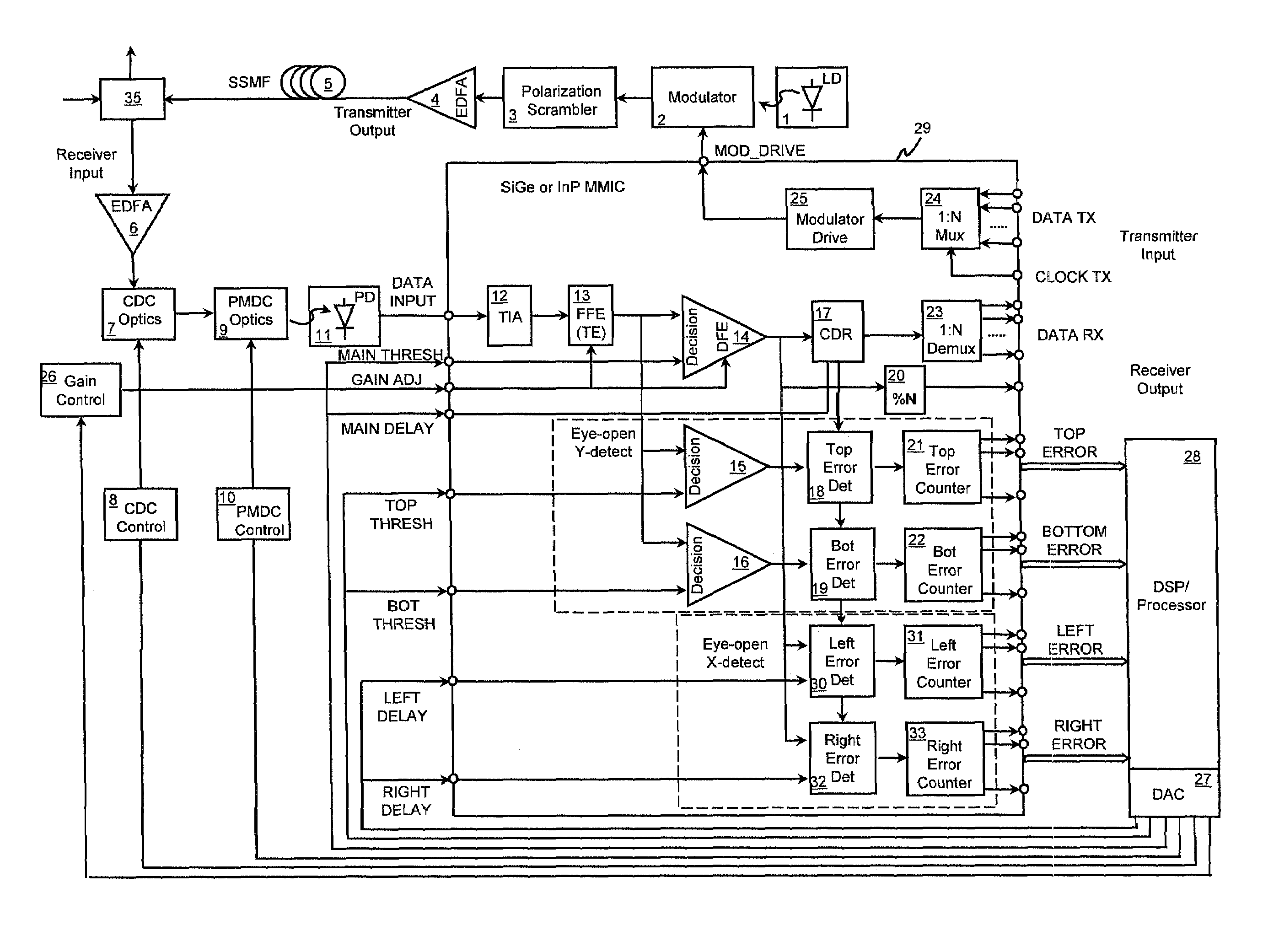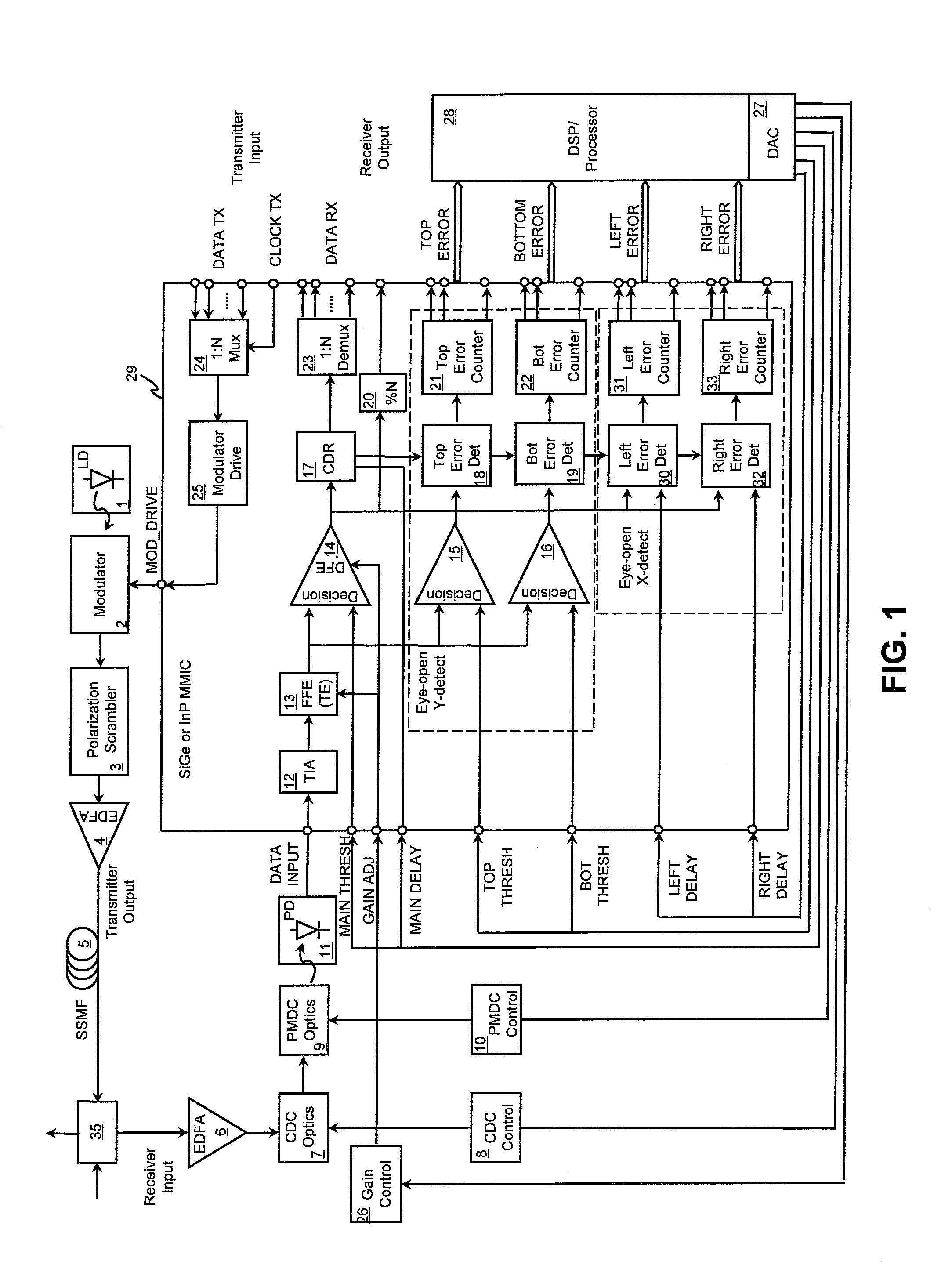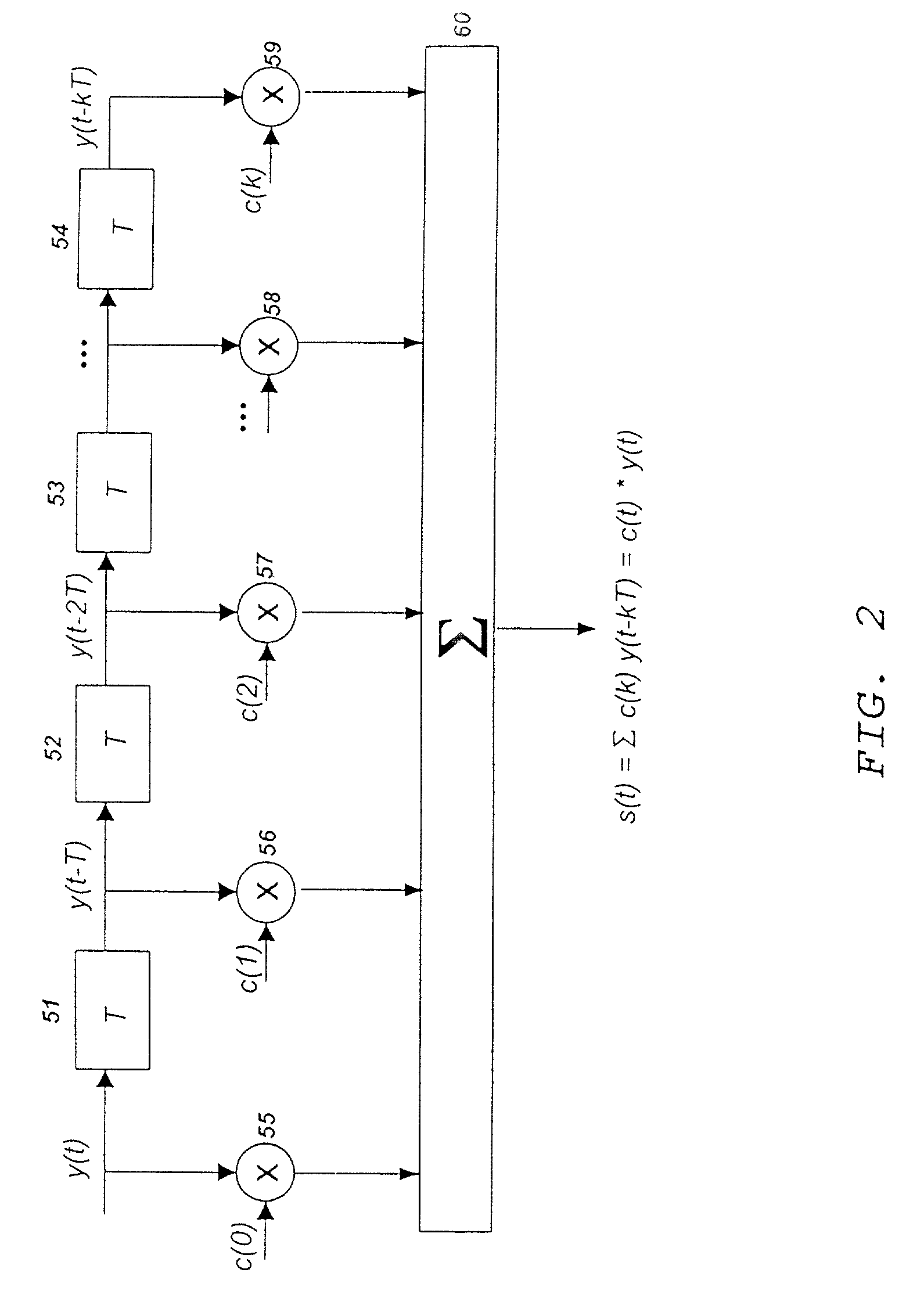Adaptive distortion compensation in optical fiber communication networks
a technology of optical fiber communication network and adaptive compensation, which is applied in the direction of optical transmission, optical elements, instruments, etc., can solve the problems that other types of phase detectors and vcos cannot accomplish these functions, vcos that run at full data rates generally consume more power than those that run at fractional rates, etc., and achieve low incremental cost, easy integration into the receiver's clock, and easy correlation
- Summary
- Abstract
- Description
- Claims
- Application Information
AI Technical Summary
Benefits of technology
Problems solved by technology
Method used
Image
Examples
Embodiment Construction
[0044]FIG. 1 shows a schematic diagram of an illustrative single chip solution for hybrid dispersion compensation and clock and data recovery in accordance with this invention. IC 29 can be fabricated using, for example, InP, SiGe or CMOS processing, depending on the desired data transmission rate.
[0045]During operation, data transmitted at lower rates can be fed in a parallel fashion into N:1 multiplexer 24, which generates a relatively high transmission rate data stream. The data stream can then be amplified by modulator driver 25 for driving optical modulator 2, which can be external to chip 29 and constructed from any appropriate optical material, such as lithium niobate. Modulator 2, in combination with light source 1, can provide a high speed optical signal.
[0046]Polarization scrambler 3 can be inserted after optical modulator 2 to randomize the polarization direction of the transmitted light. When light intensities along the principal polarization directions are the same, the...
PUM
 Login to View More
Login to View More Abstract
Description
Claims
Application Information
 Login to View More
Login to View More - R&D
- Intellectual Property
- Life Sciences
- Materials
- Tech Scout
- Unparalleled Data Quality
- Higher Quality Content
- 60% Fewer Hallucinations
Browse by: Latest US Patents, China's latest patents, Technical Efficacy Thesaurus, Application Domain, Technology Topic, Popular Technical Reports.
© 2025 PatSnap. All rights reserved.Legal|Privacy policy|Modern Slavery Act Transparency Statement|Sitemap|About US| Contact US: help@patsnap.com



